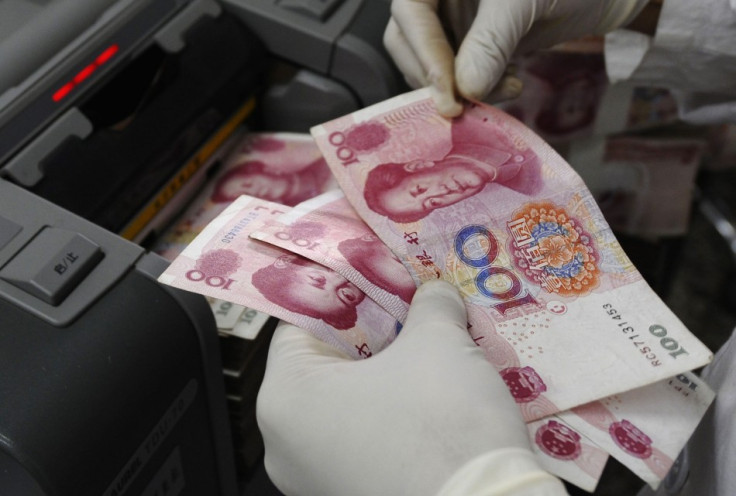China's First Big Step Towards Interest Rate Liberalisation

China's surprise move to cut its key lending rate for the first time in four years has analysts predicting a significant change in banking policy for the world's fastest-growing economy.
While many have interpreted The People's Bank of China's (PBOC) move to lower its benchmark one-year lending and deposit rates by 0.25 percent as a definitive step towards supporting economic growth in the face of the European debt crisis, others suggest the effort has broader implications for the nation's tightly-controlled banking sector
"Clearly, political developments in the Euro area are vital, but the main focus on Thursday was on central bank policy," says Paul Robinson, analyst at Barclays Capital. "(The PBOC) cut its policy rates and made a number of other important moves which our Chinese economists interpret as a significant move towards interest rate liberalisation."
RBS analyst Woon Khien Chia agrees: "In our view, the step to soften the policy-rate corridor is not only a step to make banks more competitive - it is a prelude to interest rate liberalisation, which is becoming a hot topic after the governor suggested earlier this year that the market is ready for interest rate reform."
Former academic adviser to PBOC, Li Daokui, said the rate cut, which brought the key lending rate to 6.31 percent and the deposit rate to 3.25 percent, is intended to stabilize economic expectations and prevent an excessive slowdown.
However, the step towards financial liberalisation overall is a key factor for China, which has taken a number of steps to deregulating its market and making it more open to foreign participants. The cut is tipped to move towards a market where interest rates will be set by the market, and developing financial markets so that credit can be allocated more efficient way, rather than by the government.
"In our opinion, the cut in the floor for lending rates should also be regarded as a move towards interest rate liberalisation in China," says Fleming Nielsen, analyst at Danske Bank. "Commercial banks now have increasing flexibility to set their own lending rates. The implication is that the leading benchmark interest rates are becoming less and less important and we should increasingly start to look at the interest rate in the interbank market. The next logical step for China would be to define a new leading interest rate - possibly a target for interest rates in the interbank market as in the US and Japan."
"We see this move as a prelude to interest rate deregulation," says Khien of RBS. "While gradually making banks more competitive by cutting down their guaranteed interest profit margin, the next step is probably to switch the policy targets from commercial rates to market rates such as a repo-reverse repo rate corridor."
Curbing inflation and promoting growth
China's economy has slowed over the past year but GDP growth figures are still far higher than the ailing Eurozone.
Analysts have downgraded growth projections across the board and consensus sees China's GDP slowing to around 7.9 percent. At-face-value, the downgrade seems low, compared to previous years of growth of 9 percent - 10 percent.
However, the government, especially over the last 18 months, has been trying to engineer a slowdown and curb inflationary pressures and rebalance the economy.
Analysts close to trade data sets highlighted the dangers of promoting this balance.
"We think the recent drop in [commodities] demand is a short term phenomenon and China growth demand will improve by the end of this year and will eventually show a faster growth rate in 2013 as the government try to stimulate the economy. There is the danger that growth will slow too sharply but the government wants to prevent this," says Robin Bhar, metals analyst at Société Générale.
In 2008, when the credit crisis swept across the globe and naturally hit trade hard, Wen pledged to kick-start the economy with more investment projects and subsequently prompted Beijing to roll-out a 4 trillion yuan fiscal stimulus plan.
"With this rate cut, it seems now that the government is being more serious about supporting the economy," says Charlie Awdry, manager of the Henderson China Opportunities Fund. "In the last few months, we've seen it take piecemeal action, such as subsidies, cutting the required reserve rate ratios for banks. But, over the last four weeks we've seen a dramatic reduction in inflationary expectations in the Chinese economy with the slower growth, the weaker data and, more recently, the pullback in the oil price. This has probably allowed the authorities the extra window to reduce interest rates."
© Copyright IBTimes 2025. All rights reserved.






















